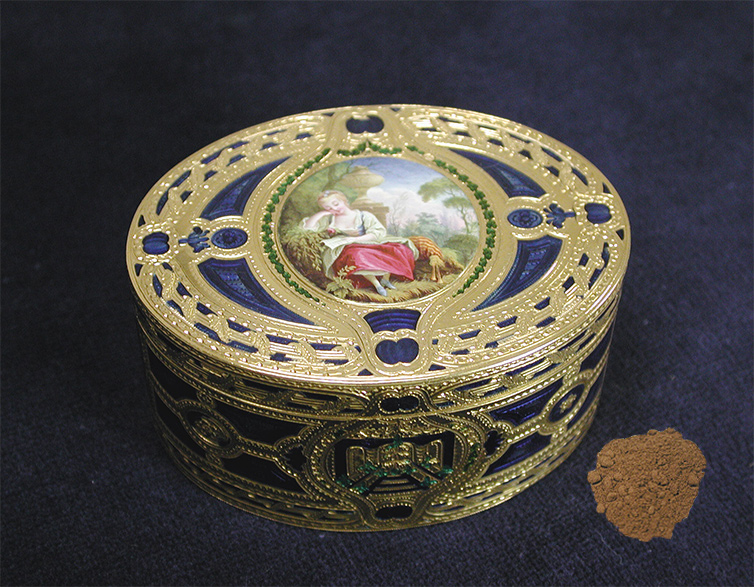In eighteenth-century Europe, Parisian goldsmiths produced snuffboxes, which held a form of tobacco. Snuffboxes were prized possessions, social props, and frequently given as royal gifts. Examining the blue and green basse-taille enamel reveals a 13th century technique, in which intaglio relief carving in the gold below its surface is filled with translucent enamel. Basse-taille enamel originated in Siena, Italy and spread rapidly across the Rhine region to France and England; the gold beneath it came from Brazil and the contents of the snuffbox came from England.

Snuff has been added to Claude Perron (master 1750, died in or before 1777), 1763–64, French, Paris, Gold, enamel, 1 9/16 x 3 5/16 x 2 1/2 in. (4 x 8.4 x 6.4cm), Metalwork-Gold and Platinum, Bequest of Catherine D. Wentworth, 1948, 48.187.450. On view at The Met Fifth Avenue in Gallery 530.
For more information, see this Virtual Enlightenment page on the materials and makers of golden snuffboxes.